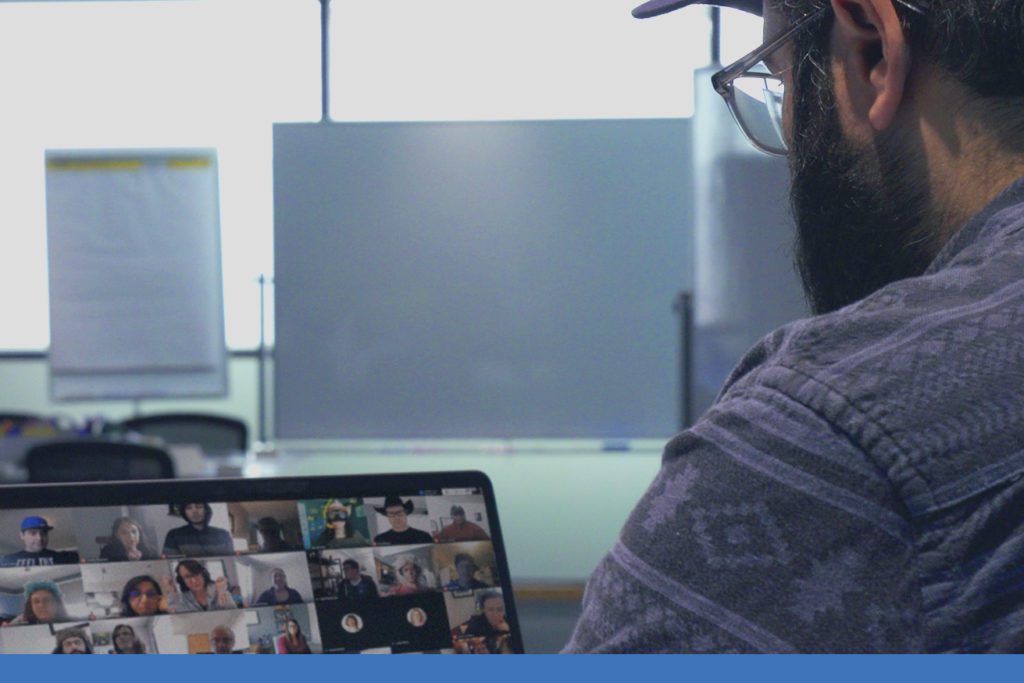
Welcome to the third post in our series on learning networks. In previous posts, we’ve discussed the power of informal learning networks and how informal learning networks emerge. In this post, I’ll share how you can uncover these networks in your own organization. Chances are they exist; they’re just not necessarily in plain sight.
I’ve found that people in learning networks aren’t in them to put themselves in the spotlight. They’re interested in sharing what they’ve learned and learned from others. If that’s the case, how do you find these people and networks? It’s actually what you find around these people that will give you some clues.
Be curious: listen for hints of learning
Have any of these scenarios ever played out in your own organization?
- Impediments that mysteriously disappear without any leadership involvement and people are asking “Who fixed this?”
- Teams and ARTs delivering work that they’ve never had the skills to work on before.
- Casual mention of “People in this business unit do this,” or “I learned that if we …” or “Did you know that …”
Informal learning networks help agility planning, solve real business and operational problems, often without anyone else knowing anything about it.
Be curious: explore the most unlikely of places
Now, think about that one business unit, team, or department where there’s low attrition, lots of innovation happening, and lots of employee excitement.
Being a curious person myself, I remember looking across the landscape of my enterprise and noticing one specific Agile release train (ART) with about 145 people that had absolutely zero attrition, for a very long time. Nobody wanted to leave. They were completely engaged and enjoyed their work so much that people stayed, even when tempted by attractive opportunities elsewhere. Around the same time period, I also observed another ART that had the opposite environment. Picture a revolving door at the entrance. This ART struggled to keep people and couldn’t replace them fast enough to stay on track with their commitments.
As I reflected on my observations, two things became very clear. One ART was learning and one wasn’t. And that meant that one ART had informal learning networks and one didn’t. The people on the first ART I described, which I call the learning ART, were learning from every single place they could, internal and external. And they were bringing in what they learned and sharing it with their coworkers. “Just keep doing what you’re doing” wasn’t even part of the conversation.
This is exactly why I encourage you to explore and ask the question, “Does anyone know this technology, this Agile skill, etc.?” Explore outside of your specific area as you seek opportunities to accelerate your learning journey. Spend time not only with your teams and ARTs but with leaders in other areas—even those completely outside of your business unit. Taking that leap to start connecting with people in other business units is a crucial first step. Inquire about what they’ve learned, what they’re learning, and where they’re learning it from. Even just sitting down for a cup of coffee (in person or virtually) and talking to someone can be the best way to find these learning networks. Which, by the way, might be hidden from direct view but aren’t secret.
Be curious: engage the people-connectors
As I alluded to earlier in this post, people in learning networks truly want to learn something and share it to mentor others, so, chances are they’re willing to tell you about everything they’re learning. I like to call them the people-connectors. These are the people that seem to know everybody, are curious, and are part of at least one internal learning network—which they probably started themselves.
Here’s an example of a typical conversation with a people connector.
Person 1: “We need to learn this skill.”
Person 2: “Maybe we could bring someone in to teach us.”
People-connector: “I know someone on team K who has this skill and who’d be happy to teach it to you.”
Think about it: what you’ll remember most about that conversation is not how you got the connection but the learning you received from it. People-connectors are motivated to share what they’ve learned to better the organization. The more they connect people and share, the more they learn from others too.

Find and join a learning network
One of the best benefits I’ve experienced working within large enterprises is that there are lots of people in various business units to connect with while on your learning journey. Many of us, including me, have unknowingly added constraints to our thinking about who we should collaborate with, such as people in our general area of business. A world of learning awaits as soon as you remove those constraints and find ways to connect with people in other areas.
But don’t stop there. Seek out others outside of your enterprise that has common learning goals and start a learning network with them. I’m in a variety of learning networks with people all over the world—and each of them started with one conversation or interaction.
Now that you know where to find these networks, read the final post in my blog series about how to connect your learning networks with SAFe.
About Audrey Boydston

Audrey Boydston is a senior consultant at Scaled Agile and an experienced SPCT, Lean-Agile coach, trainer, and facilitator. Her work focuses on continuous learning, building fundamentals, re-orienting around principles, and helping clients—from senior executives to developers—build networks and communities that support their transformations.
Share:
Back to: All Blog Posts
Next: Demystifying Leading Indicators in Product Development and Innovation